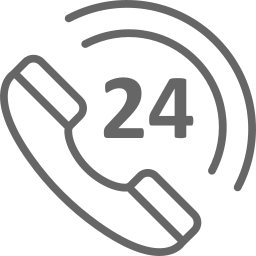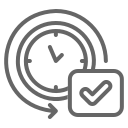Childhood and adolescence are an important time to develop, learn, and lay the foundations for future wellbeing. Nonetheless, mental health and vulnerability are influences depending on the circumstances in which children's outcomes can differ. Autism, a chronic and complex condition of neurodevelopment, is, to a large extent, the inability or complication of the children in procuring communication and social interaction, and language in supporting those abilities (Matelski & Van de Water, 2016). Nevertheless, understanding and acceptance of issues concerning aspects of differentiation, recognition, and evaluation of autism spectrum disorder (ASD) is necessary to successfully getting involved with any of these children and able to serve as a valuable resource for their parents.
Many children with ASD differ significantly in growth while they are infants — particularly in their cognitive and communication skills. Since they normally sit, crawl, and walk on time, less apparent variations in body movement growth, pretend play, and sometimes go unseen in social language. In addition to learning disabilities and variation in behavior, parents may notice the difference in how their child communicates with peer groups (Iverson et al., 2018). Such symptoms also become apparent as children reach school age and struggle to adapt to new social environments in a school setting – for example, properly engaging and participating in interactions, making friends, and enjoy age-appropriate interests. Adolescents with ASD may: have trouble reading non - verbal signs, such as body posture or tones of voice, to assume how someone feels – for instance, they may not comprehend when older people are upset depending on speech patterns, or they may not be able to determine whenever anyone teases them using sarcasm (Choi et al., 2018).
There seems to be no known cause of autism spectrum disorder but it is commonly agreed that it is induced by brain function or structure irregularities. Brain imaging display variations in brain form and function in autistic children relative to neurotypical babies. Scientists do not know the precise cause of autism, but explore a variety of hypotheses, such as the correlations between heredity, biology, and health conditions (Jia et al., 2019). There seems to be a history of autism or similar disorders in many families which further supports the hypothesis that the condition has a genetic component. Other scientists are exploring the possibility that a group of uncertain genes could tamper with cognitive development within certain conditions, leading to autism. Other researchers are still investigating issues during pregnancy or childbirth, and also external factors such as infections, physiologic deficiencies and chemical exposure (Hertz?Picciotto et al., 2018).
There had been 205,200 Australians with autism in 2018, a rise of 25.1 percent from the 164,000 with the disorder in 2015. Men were nearly three times more likely to have the disorder than women, with prevalence levels of 1.3 and 0.4 percent respectively (Australian Bureau of Statistics, 2018). There is variability in autism prevalence across all age groups, with a noticeable drop in the starting of late adolescence. Among people over 40 years of age, statistics are not discussed in-depth, since the prevalence levels reported are too small to provide accurate estimates. In 2018, 92.3 percent of people (101,900) aged between 5 to 20 years on autism spectrum attending school had some type of learning limitation (92.3 percent), including a small subset that were unable to attend the school due to a medical condition. In a normal classroom or special school, two of the children in five (40.8 percent) attended a special class (Australian Bureau of Statistics, 2018).
Care for a person with autism can be a lifelong commitment for parents and carers depending on how severe the autism is. Through the right resources and services, individual conditions and communication skills can be strengthened, and early intervention achieves the best results. Treatment options used for treating autism are often done as early as possible in a person's life. Ideally, a diagnosis occurs early in the lifetime of a child (Mercer, 2017). Since every person with autism is distinct, the best results are achieved from an individually geared therapy program for a child 's needs. Intensive training services and behavioral interventions incorporate language and social skills (Mercer, 2017). The pathology of speech focuses on the development of society and interpersonal competences. Therapeutic communication focuses on the development of sensory-motor skills such as learning play and gross motor skills, and also how to deal with social interactions.
Nonetheless, the vastly diverse topic of autism involves problems with labeling, interpretation, identification, evaluation, and differentiation from other new conditions of development. Due to shared symptomology, differentiation between neurodevelopmental disorders is crucial as it affects treatment, educational choices, and affected children's performance trajectory. Children with ASD illustrate extremely disparate phenotypic traits and broad symptoms and developmental pathways depending on their brain performance and evaluation age, making accurate and stable recognition of ASD a challenging process, particularly in the early growth (Lord et al., 2018). Researchers found certain factors that hinder correct detection of ASD, in particular in very young children. Although desirable, reliable early recognition is hindered by reversion or depletion of abilities; by age 2 they may exhibit reduced nomenclature orientation, poorer joint attention, some fine - motor disorders and decreased emotional engagement. The well-known obstacle is the marked variation of children with ASD in their cognitive, behavioral, and linguistic skills. Language abilities cover the entire spectrum from speechless or functional speech to understanding, development, and literacy stages of mastery, whereas autism severity varies from extremely extreme to very moderate (Randall et al., 2018).
Autism involves problems about conditions of development in children and adolescents. the differentiation between neurodevelopmental disorders is crucial as it affects treatment, educational choices, and affected children's performance. The symptoms and cause differs from individual to individual. Educating family members and early childhood care providers in underserved populations about the benefits of early recognition can increase the probability that autistic children will obtain the quality service they so evidently need and expect. Fundamental expectations for the care of all children with ASD that the world would readily accept were better defined.
Australian Bureau of Statistics [ABS]. (2018). Disability, ageing and carers, Australia: Summary of findings, 2018. (ABS Publication No. 4430.0).
Choi, B., Leech, K., Tager-Flusberg, H., & Nelson, C. (2018). Development of fine motor skills is associated with expressive language outcomes in infants at high and low risk for autism spectrum disorder. Journal of Neurodevelopmental Disorders, 10(1), 14.
Hertz?Picciotto, I., Schmidt, R. J., & Krakowiak, P. (2018). Understanding environmental contributions to autism: Causal concepts and the state of science. Autism Research, 11(4), 554-586.
Iverson, J., Northrup, J., Leezenbaum, N., Parladé, M., Koterba, E., & West, K. (2018). Early gesture and vocabulary development in infant siblings of children with autism spectrum disorder. Journal of Autism and Developmental Disorders, 48(1), 55-71.
Jia, G., Li, Y., Zhang, H., Chattopadhyay, I., Jensen, A. B., Blair, D. R., ... & Benson, M. (2019). Estimating heritability and genetic correlations from large health datasets in the absence of genetic data. Nature Communications, 10(1), 1-11.
Lord, C., Elsabbagh, M., Baird, G., & Veenstra-Vanderweele, J. (2018). Autism spectrum disorder. The Lancet, 392(10146), 508-520.
Matelski, L., & Van de Water, J. (2016). Risk factors in autism: Thinking outside the brain. Journal of Autoimmunity, 67, 1-7.
Mercer, J. (2017). Examining DIR/Floortime™ as a treatment for children with autism spectrum disorders: A review of research and theory. Research on Social Work Practice, 27(5), 625-635.
Randall, M., Egberts, K., Samtani, A., Scholten, R., Hooft, L., Livingstone, N. & Williams, K. (2018). Diagnostic tests for autism spectrum disorder (ASD) in preschool children. Cochrane Database of Systematic Reviews, (7).
Remember, at the center of any academic work, lies clarity and evidence. Should you need further assistance, do look up to our Nursing Assignment Help

Get 24x7 instant assistance whenever you need.

Get affordable prices for your every assignment.

Assure you to deliver the assignment before the deadline

Get Plagiarism and AI content free Assignment

Get direct communication with experts immediately.
Get
500 Words Free
on your assignment today

It's Time To Find The Right Expert to Prepare Your Assignment!
Do not let assignment submission deadlines stress you out. Explore our professional assignment writing services with competitive rates today!
Secure Your Assignment!